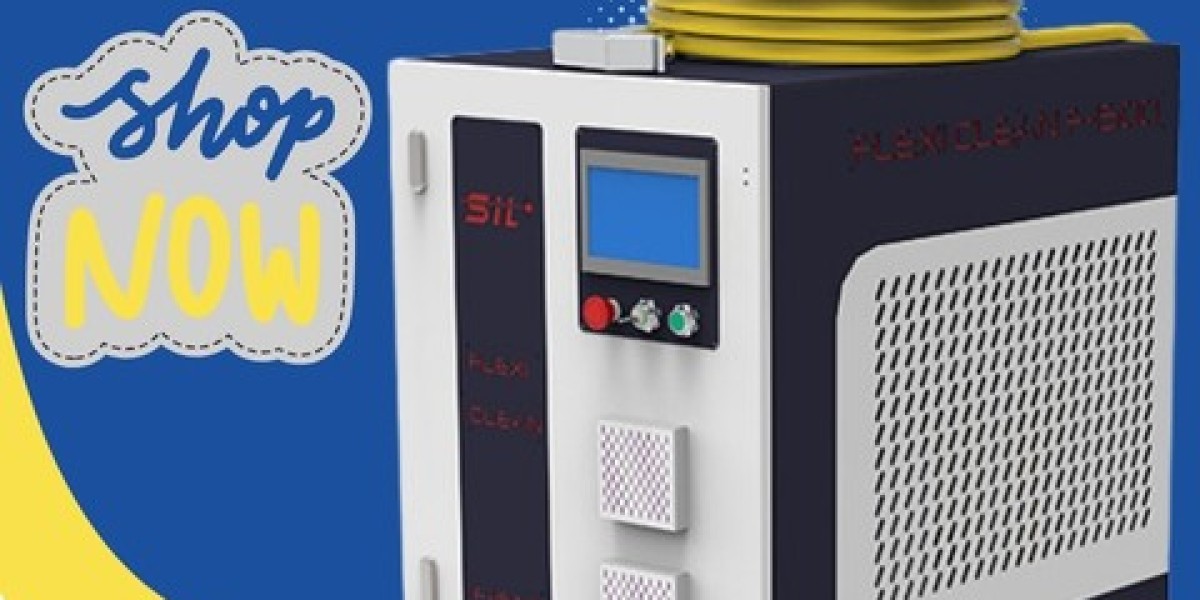Traditional methods like sandblasting, chemical solutions, and grinding have been used for decades. But in today’s world where precision, cleanliness, and sustainability matter more than ever, a modern solution is taking center stage — the laser rust removal tool.
So, what exactly is a laser rust removal tool, and why is it creating such a stir across industries?
A New Age of Metal Restoration
A laser rust removal tool is a cutting-edge device that uses high-energy laser beams to vaporize rust and unwanted surface contaminants from metal objects. Instead of abrasive physical contact or harsh chemicals, this tool relies on focused light energy to clean surfaces — a non-contact, eco-friendly, and extremely precise process.
But this isn’t just about cleaning metal. It’s about preserving integrity, maintaining value, and reducing effort. Whether you’re a DIY enthusiast restoring vintage metalware or a professional dealing with corroded infrastructure, this tool introduces a paradigm shift in how you approach rust removal.
The Science Behind the Spark
The principle is surprisingly simple: rust absorbs laser energy more efficiently than the underlying metal. The laser beam targets the oxidized layer (rust) without penetrating deep into the metal underneath. This selective absorption means you can eliminate rust without damaging the base material. That’s a game-changer for delicate restorations and valuable assets.
When the laser hits the rust, the material heats rapidly, turning into gas or breaking apart. A built-in vacuum often accompanies the tool, pulling away the debris and ensuring a clean work area. All this happens in seconds — clean, quiet, and controlled.
Real-World Uses: From Workshops to Space Centers
This isn’t just lab equipment anymore. The laser rust removal tool is being embraced by a wide range of industries:
Automotive: Restoration of classic cars, removal of paint and rust before re-coating, cleaning engine components.
Aerospace: Maintenance of aircraft parts without damaging vital structural components.
Shipbuilding and Marine Maintenance: Eliminating corrosion from ships and offshore platforms where saltwater accelerates rusting.
Manufacturing: Cleaning molds and tools, especially where precise tolerances are critical.
Historical Restoration: Preserving artifacts without applying force or chemicals that could cause irreversible damage.
The transition from conventional tools to laser-based systems is more than a trend — it’s a revolution.
Why Professionals Are Switching Gears
Using a laser rust removal tool may seem futuristic, but for professionals, it’s quickly becoming a practical necessity. Consider the productivity gains. Manual scrubbing or abrasive blasting can take hours, involve multiple steps, and create hazardous environments. Laser systems often require minimal setup, no consumables like sand or chemicals, and far less cleanup.
Not only does this improve workflow, but it also enhances workplace safety. No dust clouds. No toxic fumes. No ear-splitting noise. The work is cleaner, faster, and safer — qualities that every technician, operator, and business owner values.
A Perfect Match for Precision
Precision is where the laser rust removal tool truly shines. Unlike abrasive tools that can eat into metal or chemicals that may drip and corrode unintended areas, lasers give you microscopic control. This is particularly valuable in tasks like:
Engraving or preparing a surface for detailed painting
Spot-cleaning machinery components without disassembly
Treating localized corrosion without affecting surrounding materials
Laser parameters like pulse frequency, intensity, and speed can be adjusted, letting operators tailor the process to different materials and rust conditions. This flexibility ensures that each job is done right the first time.
Cleaner Planet, Cleaner Process
One often overlooked aspect of rust removal is its environmental impact. Sandblasting can scatter contaminants. Chemicals can leak and pollute water sources. Even grinding generates fine metal particles that require safe disposal.
In contrast, the laser rust removal tool produces minimal waste. The rust simply vaporizes or turns into dust, much of which can be captured immediately. No chemicals. No grit. No damage to surrounding ecosystems. For companies with environmental compliance goals, this tool isn’t just a choice — it’s a statement of responsibility.
Affordability Meets Innovation
For years, laser technology was the domain of large corporations and government labs. But that’s changing fast. As the technology matures and manufacturing costs drop, these tools are becoming accessible to small businesses and hobbyists alike.
Compact models are now available at prices that rival high-end power tools. And while the upfront investment may be higher than traditional rust removers, the long-term savings are clear. No recurring cost of sand, chemicals, or protective gear. Fewer labor hours. Less downtime. Better results.
Some suppliers even offer rental programs or mobile services, allowing occasional users to benefit without ownership. Whether you’re investing in a unit or outsourcing, the return on efficiency is hard to ignore.
Embracing the Future of Metalwork
If you've spent years battling rust with wire brushes, acidic gels, or sandblasters, it’s understandable to be skeptical. But technology rarely stands still — and neither should you. The laser rust removal tool is a testament to how far we’ve come in surface treatment technology.
What was once slow and messy is now fast, clean, and remarkably precise. As industries strive for better outcomes with fewer resources, tools like these are paving the way forward.
Final Thoughts
Rust may be inevitable, but how we deal with it doesn’t have to stay in the past. The laser rust removal tool presents a modern solution for age-old problems. With precision that protects, speed that boosts productivity, and a clean footprint that honors the planet, it’s not just a tool — it’s a transformative approach to corrosion control.
Whether you’re a professional looking to upgrade your workflow or a passionate restorer committed to quality, exploring laser rust removal might just be the smartest move you make this year. The future of rust removal has arrived — and it’s laser-sharp.






